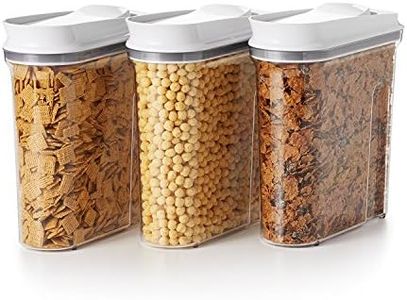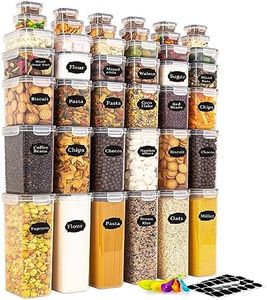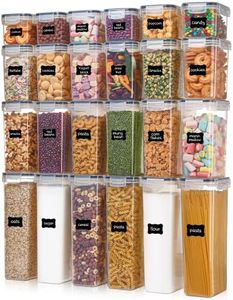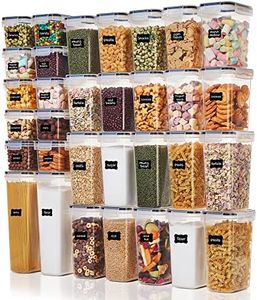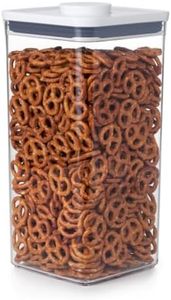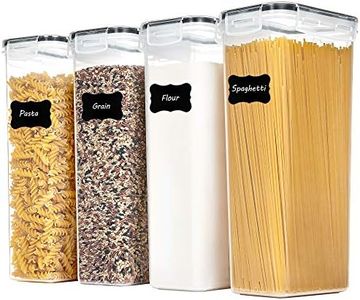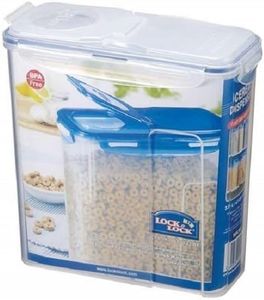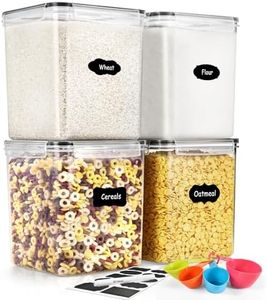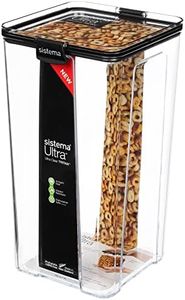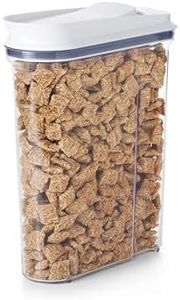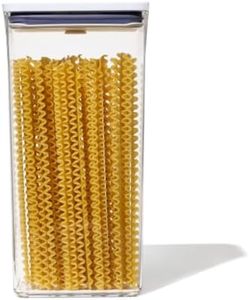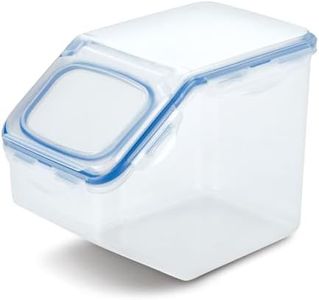We Use CookiesWe use cookies to enhance the security, performance,
functionality and for analytical and promotional activities. By continuing to browse this site you
are agreeing to our privacy policy
10 Best Cereal Containers
From leading brands and best sellers available on the web.Buying Guide for the Best Cereal Containers
Choosing the right cereal container can make your kitchen tidier and keep your cereal fresh for longer. Before shopping, think about where you will store the container, how much cereal you usually have, and how easy you want it to be to pour or scoop your breakfast. With the right container, you can make breakfast smoother and reduce the chances of waste due to staleness.CapacityCapacity refers to how much cereal the container can hold, usually measured in liters or cups. This is important because you want your container to hold a full box of your favorite cereal or the amount you typically buy. Smaller containers (less than 1 liter) are good if you eat small amounts or have limited space. Medium options (1-2 liters) work for standard cereal boxes, while larger containers (over 2 liters) suit families or those who like to buy in bulk. Think about how much cereal you buy at a time and how fast you go through it to choose the best size that won’t leave cereal sitting for too long.
Airtight SealAn airtight seal keeps air, moisture, and pests out, helping your cereal stay fresh and crunchy longer. Containers that are not airtight may let in moisture or pests, which can spoil your food. Airtight options usually use snap-on, screw-on, or silicone gasket lids. If you live in a humid area or want your cereal to last several weeks, choose a tight-sealing container. If you go through cereal quickly, this feature is still useful but may be slightly less critical.
MaterialCereal containers are commonly made from plastic, glass, or acrylic. Plastic is lightweight and less likely to break, making it good for families or kids. Glass is heavier but doesn’t absorb odors and is easy to clean, though it can break if dropped. Acrylic is usually clear like glass but lighter and not as fragile. Pick the best material based on how much you handle the container and your preferences for durability and cleaning.
Ease of UseEase of use covers features like how simple it is to open, pour, and clean the container. Some have flip-top spouts or ergonomic grips to help pour cereal without spills, while others might be basic and require taking the entire lid off. If you have children using the container or want fast access in the morning, look for simple-opening designs. For best cleaning, wide-mouth containers make it easier to reach the inside.
Shape and StackabilityThe shape of the container, such as rectangular, square, or round, affects how it fits in your pantry or cabinet, and stackability refers to whether containers can be piled on top of each other without sliding or tipping. Rectangular and square shapes usually fit better together and save space, making them ideal for small pantries or those wanting a neat look. Round containers may be easier to pour from but waste shelf space. Consider your storage space—if you want a tidy, organized pantry, look for stackable and space-efficient shapes.
TransparencyTransparency refers to whether you can see through the container to check how much cereal is left. Clear containers make it easy to spot when you’re running low, so you know when to restock. Colored or opaque options might look nicer in your kitchen but make it harder to track your cereal. Decide if you prefer the clean look of an opaque container or the convenience of seeing contents at a glance.
